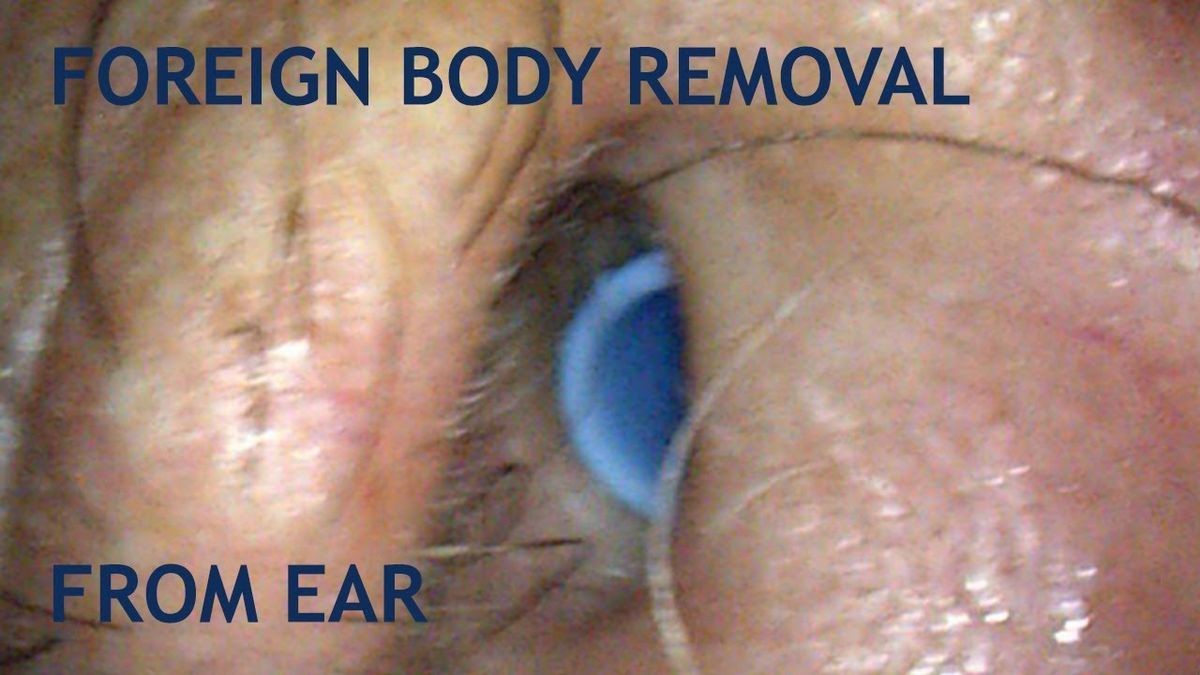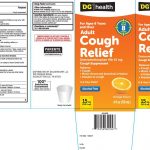
Contents
- 1 Objects Or Insects In Ear
- 1.0.1 What types of objects get stuck in the ear?
- 1.0.2 What are the symptoms of a foreign body in ear?
- 1.0.3 When should you call a doctor if you have something foreign in your ear?
- 1.0.4 How can a doctor or other medical professional tell if there is something in your ear?
- 1.0.5 How do you remove a foreign body from your ear?
- 1.0.6 How do you remove a foreign body deep in your ear?
- 1.0.7 What is the CPT code for foreign body removal from the ear?
- 1.0.8 How long can a foreign object stay in your ear?
- 1.0.9 What are some other types of ear emergencies?
Objects Or Insects In Ear
Foreign objects in the ear are common reasons for emergency room visits, especially in children.
- The majority of these things are harmless.
- Some are extremely uncomfortable (insects or sharp objects) and some can rapidly produce an infection (food or organic matter) requiring emergency treatment.
If you aren’t sure of the potential for harm due to the foreign body, seek medical care immediately.
What types of objects get stuck in the ear?
Most objects stuck in the ear canal are placed there by the person. Children who are curious about their bodies and interesting things are the group that most commonly have this problem (children aged 9 months to 8 years).
The most common things they put in their ears include:
- Beads
- Food (especially beans)
- Paper
- Cotton swabs
- Rubber erasers
- Small toys
- Marbles
- Small shells
Other types of objects that often get stuck in the ear include:
- Earwax: Earwax is a naturally occurring substance in the ear canal but can become a problem when it builds up to the point that it clogs the ear canal, and causes hearing loss or pain. Overuse of cotton swabs such as Q-tips to clean the ear can push wax and skin cell debris further into the canal and pack it against the eardrum causing symptoms.
- Insects: Insects can also fly or crawl into the ear canal. Usually, this happens while sleeping on the floor or outdoors (for example, camping). This is often frightening and dramatic as the insect’s buzzing and movement are loud and sometimes painful.
What are the symptoms of a foreign body in ear?
Foreign objects in the ear may include the following symptoms:
- Pain , inflammation, and irritation: The skin in the ear canal and the eardrum is very sensitive. Any inflammation or injury is usually readily apparent due to pain or irritation.
- In young children: The diagnosis can be challenging in young children who are not old enough to verbalize their pain. Redness, swelling, or discharge (blood, inflammatory fluid, or pus) are the main signs of injury to the ear. Small children often scratch or rub their ears repeatedly.
- Earwax impaction: If impacted earwax is the cause you may experience symptoms of a "fullness" or pressure, and a decrease in hearing on the affected side. In extreme cases, dizziness, nausea, and vomiting, or unsteady walking results from inflammation of the ear or build-up of pressure on the eardrum causing dysfunction of the middle ear.
When should you call a doctor if you have something foreign in your ear?
The vast majority of foreign bodies in the ear are not true medical emergencies. Call a doctor or other health care professional if something is in your ear, but the symptoms are minor. This can usually wait until the morning if the office is closed.
Potential harmful foreign items in the ear
Organic material (bugs, plants, or food) should be removed promptly due to the possibility of swelling of the material and rapid onset of infection.
- Insects should be removed quickly as they cause distressing symptoms and great discomfort, and can sting or bite causing further damage. A few drops of mineral oil may be placed in the ear canal before going to the doctor to kill the insect and stop the buzzing or scraping sensation on the eardrum.
- Button-type batteries from household gadgets or watches are particularly dangerous and need to be removed as soon as possible as they may leak chemicals that can burn and severely damage the ear canal even within an hour.
If you have a swollen (inflamed) ear that’s red and is displaced outward, fever, discharge, bleeding, or increasing pain; see a doctor urgently. If the object in the ear is a battery, seek medical attention immediately. If you are unsure of the severity of the injury, see a doctor.
QUESTION
How can a doctor or other medical professional tell if there is something in your ear?
A doctor or other health care professional usually can see the foreign body by directly looking in the ear with an instrument called an otoscope. A magnifying light with a plastic cone tip is slid into the ear canal to look at the structures inside. In cases involving children, it is important to realize there may be more than one foreign body, and other orifices (another ear, mouth, nose, and rectum) also may need to be examined. Once the object is seen, there are many ways of retrieving it.
How do you remove a foreign body from your ear?
If the item is very small you can try to gently shake it out. Pulling the back of the ear (the pinna) gently toward the back of the head straightens out the ear canal and the foreign body may roll or slide out with a gentle shake of the ear. Do not strike your head on the opposite side to try to dislodge the stuck item.
How do you remove a foreign body deep in your ear?
Removing a foreign object in the ear depends on the type of object; however, removal techniques may include:
- Foreign bodies stuck deep in the ear: If the item is deeper in the ear than can be seen with the naked eye, a qualified medical professional should remove it. Don’t stick anything into the ear to remove an object yourself, as you may push it in further and cause damage or rupture of the eardrum or scratch the skin of the ear canal.
- Small children: Small children don’t tolerate painful or scary interventions, and may need to be sedated medically to have foreign bodies removed from their ears. Often with children, the first try is the most successful, as subsequent attempts to remove an object can be painful and frightening to the child.
- Insects and bugs: Insects in the ear canal are often killed with either lidocaine (an anesthetic) or mineral oil. They are then flushed out with gentle warm water irrigation.
- Antibiotics: After the foreign body is removed the doctor may put the patient on antibiotic drops for five days to a week to prevent infection from trauma to the ear canal.
At the doctor’s office or in the emergency room the foreign body can be removed using several techniques. (Don’t try these at home.)
- Modified tweezers or forceps can be used to reach in and grab the object with the help of an otoscope so important structures are not damaged.
- Gentle suction can be used to suck out the object.
- Irrigation of the canal with warm water and a small catheter can flush certain materials out of the canal and clean out debris.
- Some doctors have devised ingenious and novel ways to remove objects from ear canals.
What is the CPT code for foreign body removal from the ear?
The current procedural terminology (CPT) code for foreign body removal from the ear without general anesthesia is 69200. The type of removal described in this procedure includes the removal of foreign bodies under direct visualization with an otoscope (an instrument for examining the ear).
The most commonly used instruments to remove foreign bodies include:
- Forceps
- Cerumen spoon
- Suction
- Mineral oil (in case of an insect to immobilize them before removing)
If the removal procedure requires general anesthesia, the CPT code changes to 69205: Removal of foreign body from the external auditory canal with general anesthesia.
In the case of a large foreign body, the procedure may require an additional incision to enlarge the opening before the foreign body can be extracted.
Some of the CPT codes for other types of foreign body removal include:
- 30300: Removal of foreign body, intranasal, office-type procedure
- 40804: Removal of embedded foreign body, the vestibule of mouth, simple
- 42809: Removal of foreign body from the pharynx
- 69200: Removal of foreign body from the external auditory canal, without general anesthesia
How long can a foreign object stay in your ear?
A foreign object cannot fall out from your ear on its own. It can stay in your ear until you do not remove it or get it removed.
Small, inert foreign bodies, such as beads, can stay for 1-2 weeks in your ear without causing any complications. Complications result when you try unsafe methods to deal with the problem. If organic materials, such as cotton, food items, or insects go deep inside while attempting their removal, an ear infection may develop.
You must not attempt to remove a foreign body at home. Promptly contact your doctor.
What are some other types of ear emergencies?
Other types of ear emergencies include:
- The ruptured tympanic membrane (eardrum) can be a result of foreign bodies, middle ear infection, or pressure trauma to the ear. Often the patient feels pain, notices a thin bloody discharge from the ear, and has a decreased sense of hearing. If a person experiences these symptoms and thinks the eardrum may be ruptured or damaged, keep the ear dry, and seek medical care. Do not place cotton swabs, liquids, or other objects in the ear.
- Acute otitis externa (swimmer’s ear) is an infection of the outer ear canal that is usually caused by irritation of the canal skin that is made worse by water remaining in the ear canal after swimming or bathing. Cellulitis (skin infection) causes the ear canal to turn red and swell. The ear becomes very painful and a thin yellow fluid (infected pus) comes out of the canal. Some patients experience pain with mouth opening and chewing because of inflammation in the ear canal. The infection can spread to the side of the face or the lymph glands in the neck. Treatment of swimmer’s ear includes antibiotic drops and, in severe cases, IV or oral antibiotics.
- Earwax impaction is usually a harmless cause of decreased hearing. Wax is formed in the ear canals naturally. Individuals who over-aggressively clean their ears with cotton swabs can push wax further into the canal, impacting (compressing) it against the ear drum. Over-the-counter (OTC) products, like carbamide peroxide (Auro, Debrox, Murine Earwax Drops) can be used to clean the ear regularly. If the wax impaction is causing pain, decreased hearing, or dizziness, a doctor can irrigate (flush) the wax out of the ear gently with warm water and peroxide. If a person has chronic problems with earwax buildup, discuss long-term solutions with an ear, nose, and throat (ENT) specialist (an otolaryngologist).
By clicking Submit, I agree to the MedicineNet’s Terms & Conditions & Privacy Policy and understand that I may opt out of MedicineNet’s subscriptions at any time.
MedlinePlus.gov. "Ear Emergencies."
Medscape Medical Reference
Medscape Medical Reference


